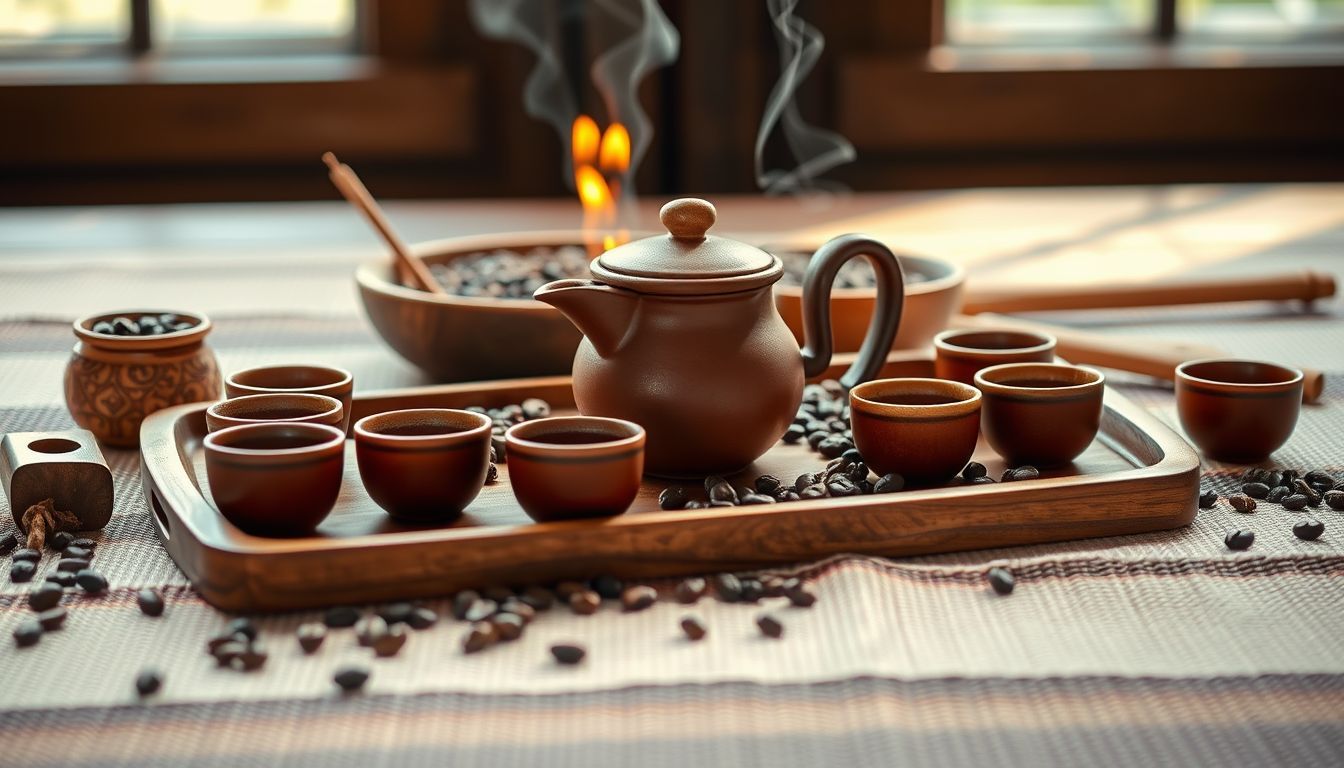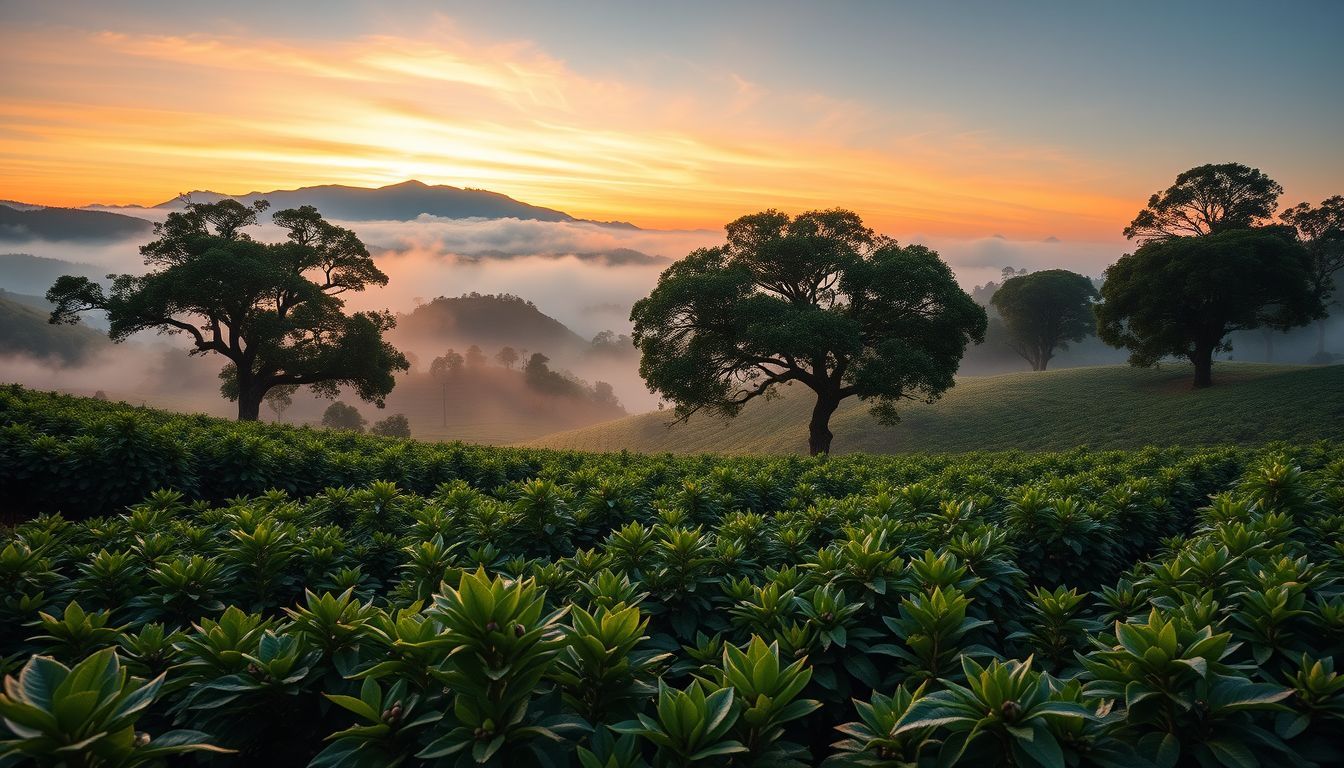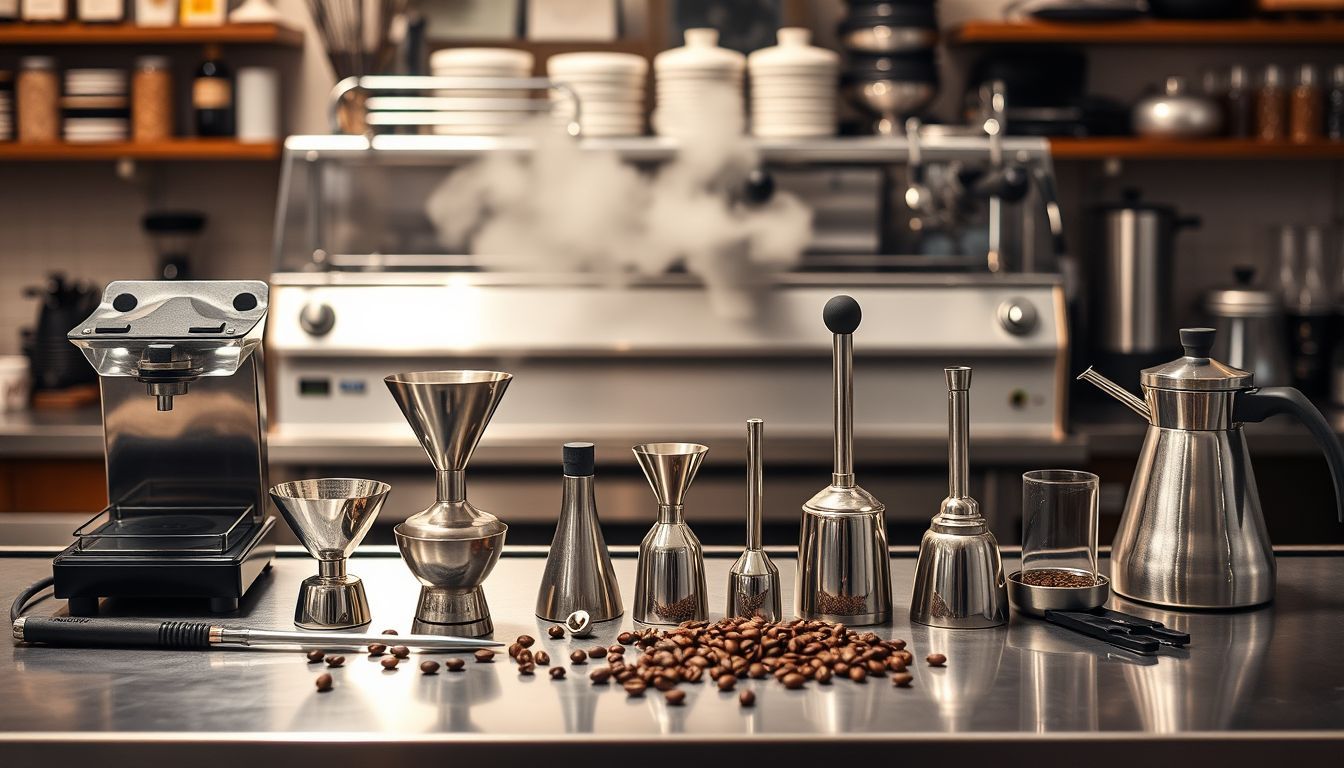The Cultural Significance of Coffee Ceremonies: Traditions, Variations, and Modern Adaptations Around the World
Embark on a journey through the mystical world of coffee ceremonies, exploring their deep cultural roots, diverse traditions, and modern adaptations that continue to unite communities worldwide.

Amazon Affiliate Disclosure
This post contains affiliate links. If you purchase through these links, we may earn a small commission at no additional cost to you.
The Cultural Significance of Coffee Ceremonies: Traditions, Variations, and Modern Adaptations Around the World
In the heart of every culture, there lies a ritual—a sacred dance of tradition and community. Among these, the coffee ceremony stands as a testament to humanity's shared love for this enchanting brew. From the highlands of Ethiopia to the bustling streets of Tokyo, coffee ceremonies weave tales of history, hospitality, and harmony.
Ethiopia: The Birthplace of Coffee Rituals
In the land where coffee was first discovered, the Ethiopian coffee ceremony is a daily ritual that transcends mere consumption. It's a spiritual journey, a communal act that binds families and friends.
The Ritual Unfolds
The ceremony begins with the roasting of green coffee beans over an open flame. The rich aroma fills the air, signaling the start of a sacred tradition. Once roasted to perfection, the beans are ground using a mortar and pestle, then brewed in a jebena—a traditional clay pot. The coffee is poured into small cups without handles, known as sini, and served in three rounds: abol, tona, and baraka, each symbolizing a step towards transformation and blessing.
This ritual is more than a method of preparation; it's a time for reflection, storytelling, and connection. The Ethiopian coffee ceremony embodies the essence of community and respect.
Turkey: A Brew Steeped in History
Turkish coffee, recognized by UNESCO as an Intangible Cultural Heritage, is a symbol of hospitality and friendship. Its preparation and consumption are steeped in tradition and artistry.
The Art of Brewing
Finely ground coffee is combined with water and sugar in a cezve, a small copper pot. The mixture is slowly heated, allowing a thick foam to form. Just before boiling, the coffee is poured into small cups, with the foam on top—a mark of a well-prepared cup. The grounds settle at the bottom, and after drinking, it's customary to turn the cup over for fortune-telling, interpreting the patterns left behind.
This ritual reflects the Turkish emphasis on patience, craftsmanship, and social connection.
Japan: Precision and Aesthetics
In Japan, coffee culture blends modern techniques with traditional aesthetics. The meticulous pour-over method is treated as a meditative process, highlighting precision and clarity of flavor.
The Kissaten Experience
Japanese kissaten, traditional coffee shops, serve meticulously prepared coffee in serene settings. The pour-over method, especially using devices like the Hario V60, is performed with careful attention to detail, reflecting the country's deep respect for craftsmanship.
This approach turns coffee brewing into an art, embodying mindfulness and the pursuit of perfection.
Sweden: Fika – A Pause for Connection
In Sweden, fika is more than just a coffee break—it's a philosophy of slowing down and cherishing the moment.
The Fika Tradition
Fika involves enjoying coffee, often paired with baked goods like kanelbullar (cinnamon buns), in the company of friends, family, or colleagues. This tradition embodies the Swedish values of balance and well-being, offering a pause from the day's busyness to connect with others.
Whether at home, in the workplace, or at a café, fika is a reminder to savor life's simple pleasures.
Saudi Arabia: A Symbol of Hospitality
In Saudi Arabia, coffee, or qahwa, is served as a sign of hospitality. The coffee is spiced with cardamom and often accompanied by dates.
The Ritual of Serving
Guests are served in small cups, and it's customary to accept at least one cup but no more than three. The serving of Arabic coffee is steeped in etiquette, reflecting generosity, respect, and tradition, especially during gatherings and special occasions.
Modern Adaptations and Global Influence
As the world becomes more interconnected, traditional coffee ceremonies have found new expressions. In urban settings, abbreviated versions of these rituals cater to the fast-paced lifestyle, yet the essence remains—fostering community and connection.
The Global Coffee Scene
Specialty coffee shops worldwide incorporate elements of these traditional ceremonies, emphasizing freshly ground, high-quality beans and mindful preparation methods. This fusion honors the rich heritage of coffee rituals while adapting to contemporary tastes and practices.
Conclusion
The tapestry of coffee ceremonies across the globe reveals a shared human desire for connection, tradition, and the simple pleasure of a well-brewed cup. These rituals, whether ancient or modern, remind us that coffee is more than a beverage—it's a bridge between cultures, a symbol of hospitality, and a celebration of community.
As we partake in our daily cup, let us remember the rich traditions that have shaped this universal ritual, and perhaps, find ways to incorporate a touch of ceremony into our own coffee experiences.

Clara Faye
I've always felt like I have one foot in this world and one in another, a place filled with forgotten folklore and whispered magic. My stories are born from that space—from the mists of Ireland and the pages of dusty old books. I write for anyone who still looks at the world and sees the possibility of enchantment


